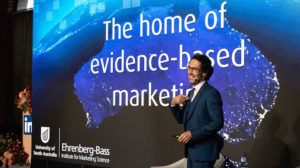Youtube’s most recent upfront reignited the debate around the relevance of TV and the much-maligned 30-second spot. Ritson counterbalanced the hyperbole with:
“I think most marketers these days agree that the reports of the death of linear TV have been wildly exaggerated. But nonetheless, we have to accept that a lot of people are watching a lot less linear TV than perhaps they once did,” said Ritson.
“That’s a major problem, especially for big brands who have for decades depended on linear TV to build their brands at the top of the funnel through its enormous reach. And that’s exactly where YouTube plays a wonderful role. As a supplement to linear TV, especially on connected televisions, YouTube provides a brilliant way to restore that reach, particularly among the younger demographics that have proven so difficult in recent years to reach out to.”
While Ritson is right, there are two problems with this.
First, the idea of a “top of the funnel” is antiquated. We are in need of the continuous creation of mental, physical and digital availability for our brands across all stages of the funnel. All buyers buy infrequently. The funnel is a broken metaphor. More to come on that.
Digital mediums – Youtube – plays a critical role in generating that availability. The issue is efficiency, effectiveness and reach. That is where the debate starts. So even if we are watching TV less – much less in my case – does that smaller viewing audience more efficiently and effectively create availability? I can’t recall a single ad or brand I’ve seen on Youtube but can recall brands I’ve seen on TV. Samples of one make for terrible evidence.
Second, drawing two mediums into a compare and delete debate is futile. The reality is all marketers of any quality will be working the media mix for outcomes. It’s not either, or – but rather where to allocate the spend across a mix. As more of us consume formats that move – TV, video, social the real losers will be static media. Not just in terms of the reach and efficiency of that media but also the complexity and cost in making that media work.
What is true is that we must adjust all marketing to reflect the attention span of audiences – short formats for intercepting the “feed” and much longer formats for engagement.
“Six second bumpers and 15-second spots. A smart mix can build a great story … languishing behind is the 30 and its cousin, the 45-second spot, which generate the lowest ROI across all screens … 30-seconds is too complex to automate, too simple to convince. It’s too short if I’ve chosen to engage with it, and it’s far too long if I’m forced to watch it. Consumers tend to skip the platform if they’re faced with the forced 30-second spot. Hence skippable format and the burst of the six second bumper. It’s long enough to grab my attention and over before I have the chance to object.”
The best performing ads, created by only 15 per cent of advertisers, were longer than three minutes, per Hunt.
So, go long, go short – but don’t get trapped in the middle.






